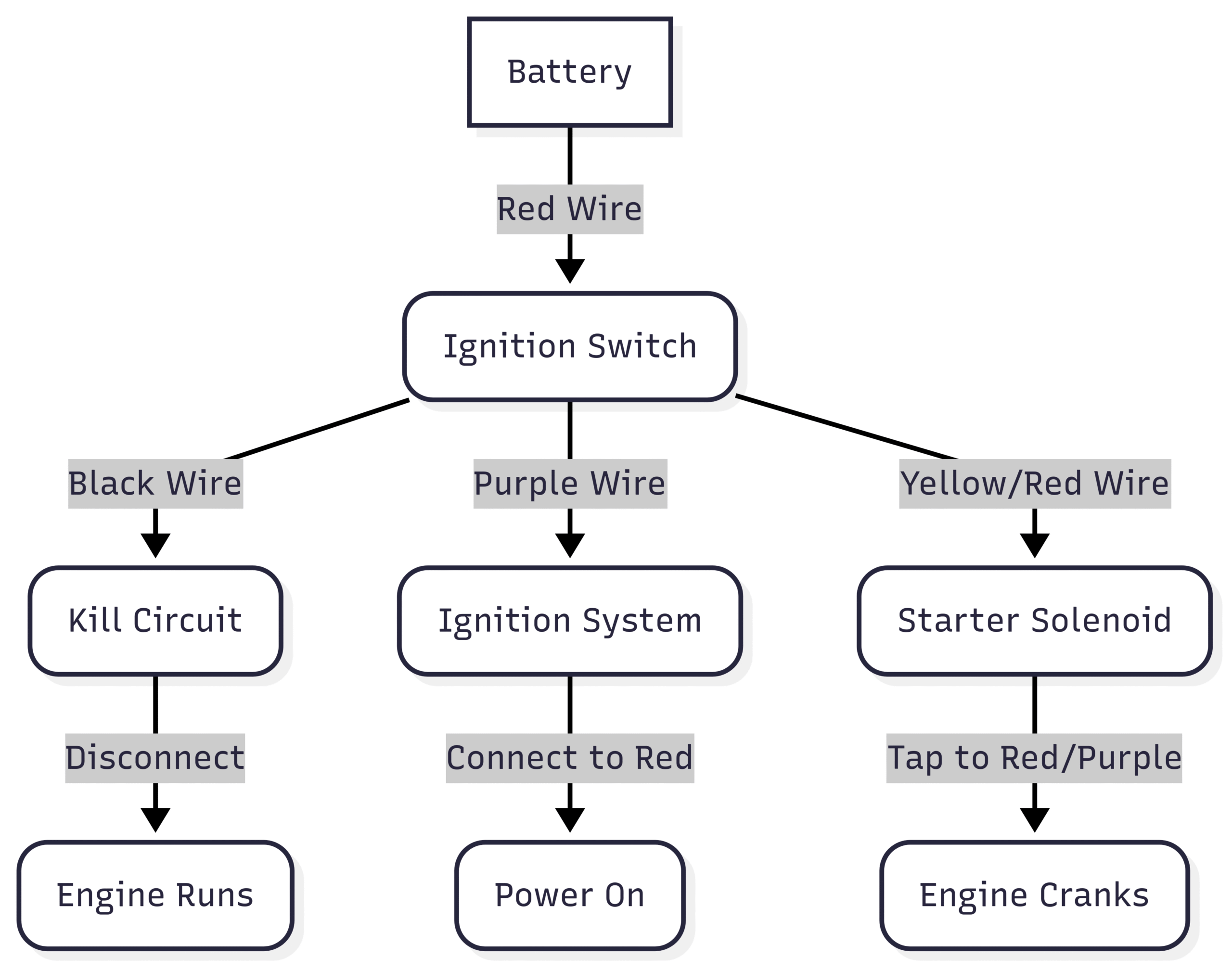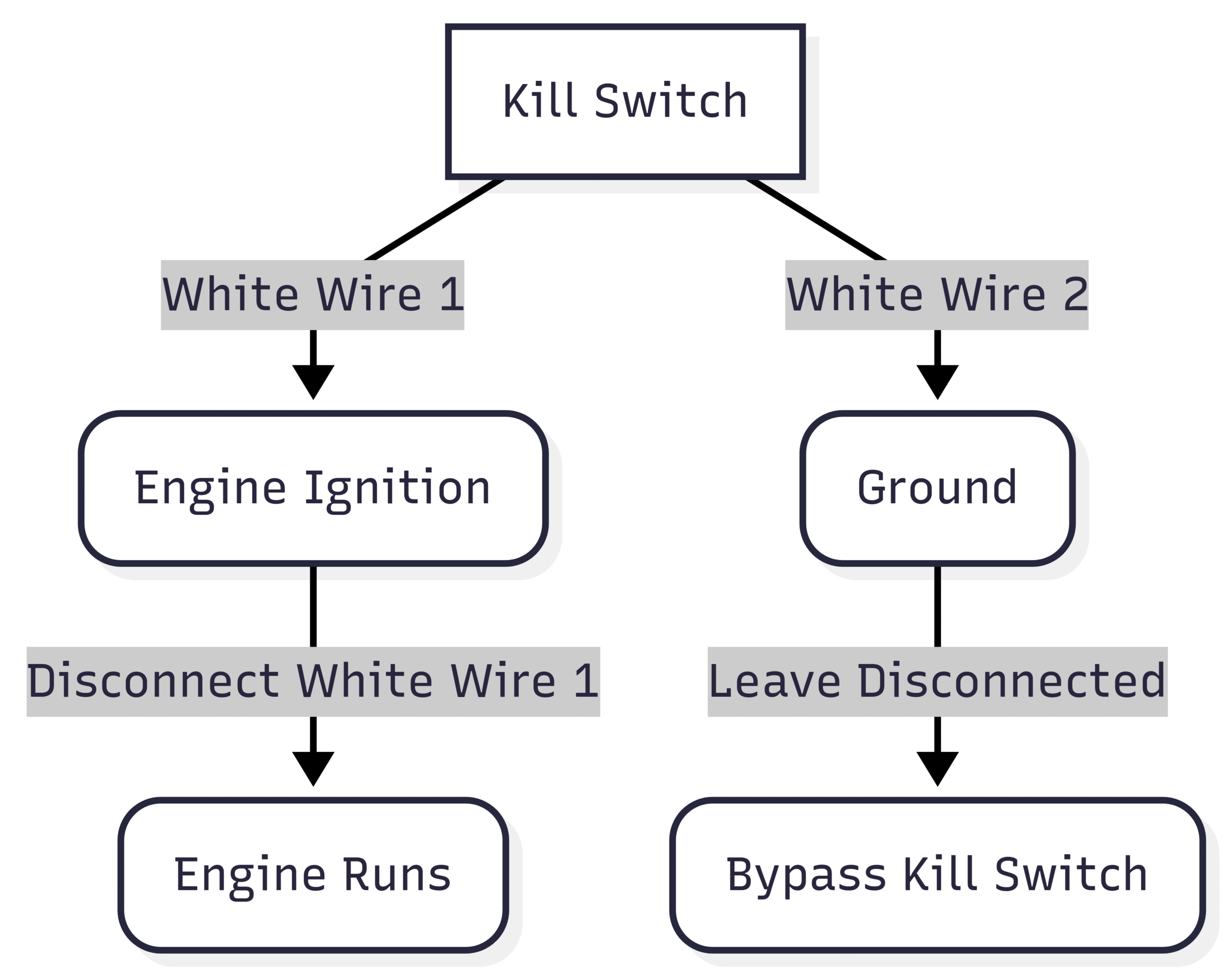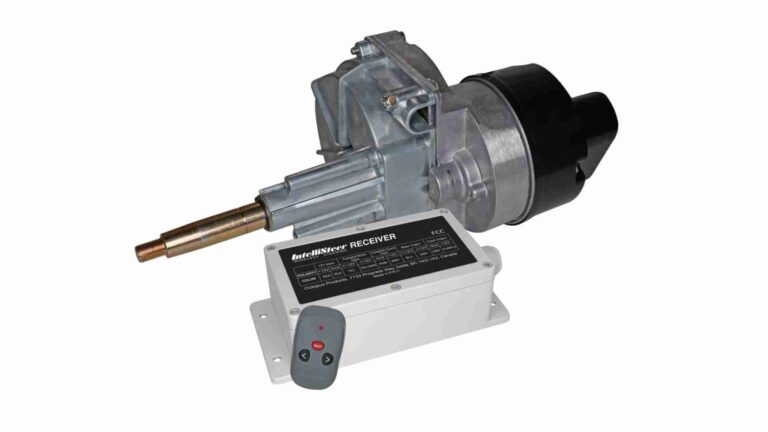How to Start a Boat Without Key? Bypass Ignition System
Learn how to bypass the ignition system on a boat without a key. Step-by-step guide for Mercury, Yamaha, and more. Safe, temporary solutions.
Losing the key to your boat’s ignition system can be a frustrating experience, especially when you’re eager to hit the water. Whether you’re dealing with a 2004 Mercury 40HP outboard or a vintage 1965 Starfire 90S, bypassing the ignition system is a practical, temporary solution to get your boat running. This comprehensive guide explains how to safely bypass the ignition system on various outboard motors, including Mercury, Yamaha, and Johnson, while emphasizing safety precautions and the importance of proper repairs. Designed for boat owners with basic mechanical knowledge, this article provides step-by-step instructions, wiring diagrams, and expert tips to ensure you can start your boat without a key.
Why You Might Need to Bypass the Ignition System
Boat ignition systems rely on keys to complete electrical circuits, powering the engine and engaging the starter. Losing a key, dealing with a faulty switch, or facing a kill switch malfunction can prevent the engine from starting. Bypassing the ignition system involves manually connecting the necessary wires to mimic the key’s function. This is often a temporary fix, as prolonged bypassing can compromise safety features like kill switches or neutral safety switches, which are designed to prevent accidents.
Common scenarios requiring an ignition bypass include:
- Lost or Broken Key: A missing or damaged key prevents the ignition from functioning.
- Faulty Ignition Switch: Corrosion or wear can cause the switch to fail.
- Kill Switch Issues: A malfunctioning kill switch may ground the ignition, stopping the engine.
- Emergency Situations: When stranded, bypassing the ignition can get you back to shore.
Warning: Bypassing the ignition system should only be performed by individuals with basic electrical knowledge. Incorrect wiring can damage the engine, cause electrical fires, or disable critical safety features. Always consult a professional marine mechanic for permanent repairs.
Understanding Boat Ignition Systems
Boat ignition systems, particularly for outboard motors, vary by make, model, and year. Most systems consist of:
- Ignition Switch: A key-operated switch that controls power to the engine and accessories.
- Wiring Harness: Connects the ignition switch to the battery, starter, and other components.
- Solenoid: Engages the starter motor when activated.
- Kill Switch: A safety feature that stops the engine if the operator is ejected.
- Neutral Safety Switch: Prevents starting the engine in gear.
For example, a 2004 Mercury 40HP outboard uses a wiring harness with color-coded wires (red, black, purple, yellow/red) to control ignition and starting. Older models, like a 1965 Starfire 90S, may have simpler systems but still require careful identification of wires.
Common Wiring Configurations
| Wire Color | Function | Notes |
|---|---|---|
| Red | Battery/Power | Supplies constant 12V power |
| Black | Ground | Completes the circuit; often connected to kill switch |
| Purple | Accessory/Ignition | Powers ignition system and accessories |
| Yellow (or Yellow/Red) | Starter | Engages the starter motor |
| White | Solenoid | Activates the solenoid for starting |
| Black/Yellow | Kill Circuit | Grounds ignition to stop the engine |
Note: Always consult the specific wiring diagram for your engine, as colors and configurations vary by manufacturer and model.
Step-by-Step Guide to Bypassing the Ignition System
Below is a detailed process for bypassing the ignition system on a 2004 Mercury 40HP outboard, followed by adaptations for other models like Yamaha and Johnson. Always disconnect the battery before working on electrical components to prevent shocks or shorts.
Tools and Materials Needed
- Screwdriver (flathead or Phillips)
- Insulated pliers
- Wire cutters/strippers
- Electrical tape or heat-shrink tubing
- Multimeter or voltmeter
- Jumper wires with alligator clips
- Wiring diagram (specific to your engine model)
- Safety gloves and glasses
Bypassing a 2004 Mercury 40HP Outboard Ignition
- Locate the Ignition Switch Wiring Harness:
- Find the ignition switch, typically located on the control panel or near the helm.
- Access the back of the switch to identify the wiring harness.
- For a 2004 Mercury 40HP (serial number OT827178), the key wires are:
- Black (ground/kill circuit)
- Red (battery/power)
- Purple (ignition/accessory)
- Yellow with red stripe (starter)
- Disconnect the Battery:
- Disconnect the negative (black) battery cable to prevent electrical hazards.
- Identify and Disconnect the Black Wire:
- Locate the black wire (kill circuit). This wire grounds the ignition to stop the engine.
- Disconnect it to prevent the kill circuit from interrupting the bypass.
- Connect Red and Purple Wires:
- Twist the red (battery) and purple (ignition) wires together using insulated connectors or electrical tape.
- This powers the ignition system, mimicking the “ON” position of the key switch.
- Engage the Starter:
- Momentarily tap the yellow/red wire to the connected red and purple wires.
- This sends power to the starter solenoid, cranking the engine.
- Once the engine starts, release the yellow/red wire to avoid damaging the starter.
- Stopping the Engine:
- Reconnect the black wire to ground the ignition, stopping the engine.
- Alternatively, separate the red and purple wires to cut power.
- Secure Connections:
- Use electrical tape or heat-shrink tubing to insulate all connections.
- Ensure no exposed wires can short against the boat’s metal components.
Diagram: Mercury 40HP Ignition Bypass

Bypassing Other Outboard Motors
1965 Starfire 90S
Older motors like the 1965 Starfire 90S have simpler ignition systems but require similar steps:
- Test the Solenoid:
- Connect a multimeter across the solenoid’s small terminal (next to the battery terminal) and ground.
- Turn the key to “START” to check for continuity. If open, the switch or wiring is faulty.
- Jump the Solenoid:
- Use a jumper wire from the battery’s positive terminal to the solenoid’s small starter post.
- Alternatively, jump the large battery terminal to the starter terminal on the solenoid.
- Check Safety Switches:
- Verify the neutral safety switch (often in the control box) is not disengaged due to throttle position or misalignment.
- If the engine was last stopped in gear, adjust to neutral before attempting to start.
1977 Johnson 85HP
For a 6-wire ignition switch (M, M, A, C, B, S terminals):
- Disconnect the Kill Circuit:
- Remove the black/yellow wire (M terminal) to disable the kill circuit.
- Power the Ignition:
- Jump the red wire (B terminal) to the purple wire (A terminal) for ignition power.
- Crank the Engine:
- Use a jumper wire from the red wire (B) to the white wire (S) to engage the starter solenoid.
- Stop the Engine:
- Reconnect the black/yellow wire or disconnect the red and purple wires.
2007 Yamaha F-250
Yamaha outboards often use a kill switch with white wires:
- Bypass the Kill Switch:
- Locate the two white wires behind the kill switch (bullet connectors).
- Disconnect one wire to disable the kill switch, allowing the engine to run.
- Hotwire the Ignition:
- Follow the Mercury steps, identifying equivalent wires (red for power, white for solenoid).
- Test with a multimeter to confirm the kill switch’s open/closed state.
Diagram: Yamaha F-250 Kill Switch Bypass

Safety Precautions
Bypassing an ignition system is inherently risky. Follow these precautions to minimize hazards:
- Disconnect the Battery: Always disconnect the battery before handling wires to prevent shocks or shorts.
- Use Insulated Tools: Prevent accidental shorts with insulated pliers and screwdrivers.
- Check for Gasoline Fumes: Ensure the area is well-ventilated to avoid ignition of fuel vapors.
- Verify Cooling System: Ensure the engine’s cooling system (impeller, water pump) is operational to prevent overheating.
- Temporary Fix Only: Bypassing disables safety features like kill switches. Replace the key or switch as soon as possible.
- Consult Wiring Diagrams: Use the engine’s specific wiring diagram to avoid damaging sensitive electronics.
- Wear Safety Gear: Use gloves and glasses to protect against sparks or debris.
Warning: Applying 12V to the wrong circuit (e.g., ground) can blow fuses, damage electronics, or cause fires. For example, a user reported blowing a 10A fuse near the starter motor after miswiring.
Replacement Options and Costs
While bypassing is a temporary fix, replacing the ignition switch or key is the recommended long-term solution. Below are typical costs and specifications for replacement parts:
| Component | Description | Approx. Cost (USD) | Where to Purchase |
|---|---|---|---|
| Ignition Switch (Mercury 40HP) | OEM Quicksilver, 5-6 terminals | $20–$50 | Amazon, West Marine |
| Ignition Switch (Johnson 85HP) | 6-wire switch, universal | $18–$40 | eBay, Boat Parts Stores |
| Yamaha Kill Switch | Lanyard-style, dash-mounted | $30–$60 | Yamaha Dealer, Tohatsu.us |
| Replacement Key | Custom-cut for specific model | $10–$50 | Mobile locksmith, Dealer |
Pro Tip: Mobile locksmiths can create a new key for $50 or less, often faster than ordering through a dealer. For example, a user reported paying $50 for a new key for their boat.
Alternatives to Bypassing
Instead of bypassing, consider these alternatives:
- Install a Push-Button Start: Replace the key switch with a push-button system (e.g., Cole Herse blue LED button, ~$15–$30). Connect red to purple for ignition, then tap yellow for starting.
- Replace the Ignition Switch: A new switch is inexpensive and restores safety features.
- Check for Other Issues: A “dead” ignition could be due to a bad ground, corroded wires, or a faulty solenoid. Test with a multimeter before bypassing.
- Consult a Mechanic: If unsure, a marine mechanic can diagnose and fix the issue, often for $100–$200 in labor.
Common Issues and Troubleshooting
Bypassing may not work if other components are faulty. Common issues include:
- Corroded Wires: Inspect for corrosion at terminals and clean with a wire brush.
- Faulty Solenoid: Test by jumping the battery to the solenoid’s starter post. If it doesn’t crank, replace the solenoid (~$20–$50).
- Neutral Safety Switch: If the engine won’t start, ensure the throttle is in neutral, as the safety switch may be engaged.
- Blown Fuses: Check for blown fuses (e.g., 10A near the starter) caused by incorrect wiring.
Example Case: A user with a 1965 Starfire 90S found the starter cranked but didn’t turn over. Testing revealed a faulty ignition switch, which was replaced after confirming with a multimeter.
Expert Tips for Boat Owners
- Keep a Wiring Diagram Onboard: Store a laminated copy of your engine’s wiring diagram for emergencies.
- Carry Jumper Wires: A set of jumper wires with alligator clips (~$5–$10) can save the day.
- Test Before You Go: Practice bypassing at home to familiarize yourself with the process.
- Use a Kill Switch: Always wear the kill switch lanyard when boating alone to prevent accidents.
- Regular Maintenance: Inspect ignition components annually to prevent corrosion or wear.
Community Insights
Boating forums reveal that many owners face ignition issues:
- A user with a 2007 Yamaha F-250 bypassed a faulty kill switch by disconnecting one white wire, restoring functionality.
- Another with a 1988 Maxum boat noted the engine wouldn’t stop due to a miswired ignition switch, resolved by consulting a wiring diagram.
- A 1973 Mako owner emphasized the value of knowing how to hotwire, as intermittent key switch failures are common in older boats.
Conclusion
Bypassing a boat’s ignition system without a key is a practical skill for emergencies, whether you’re dealing with a 2004 Mercury 40HP, a 1965 Starfire 90S, or a 2007 Yamaha F-250. By carefully identifying and connecting the correct wires, you can temporarily start your engine and avoid being stranded. However, this is a stopgap measure—replace the key or switch as soon as possible to restore safety features. Always prioritize safety, use insulated tools, and consult wiring diagrams to avoid costly mistakes. With the right knowledge and preparation, you can keep your boating adventures on track, even without a key.
Share How to Start a Boat Without Key? Bypass Ignition System with your friends and Leave a comment below with your thoughts.
Read Superyacht vs. Mega Yacht: What’s the Difference? Guide until we meet in the next article.







Very descriptive post, I enjoyed that bit. Will there be a part 2?